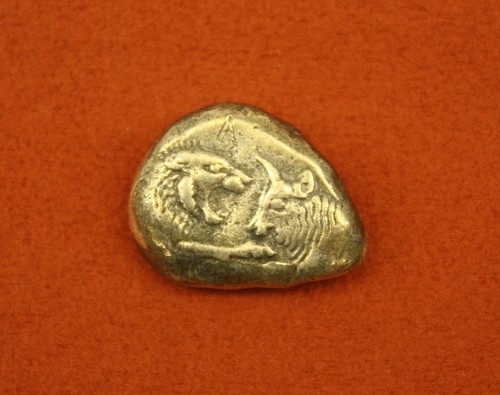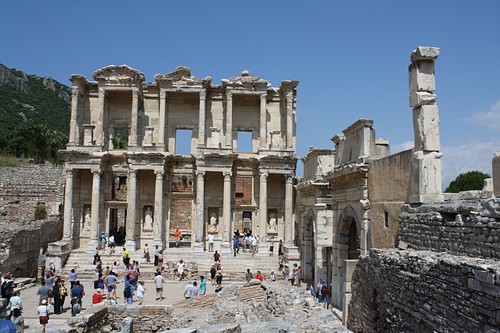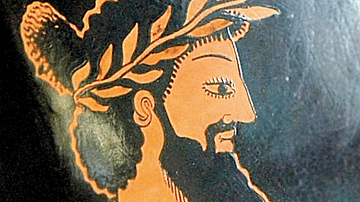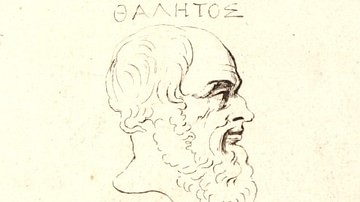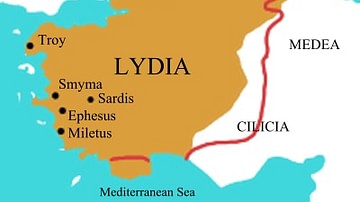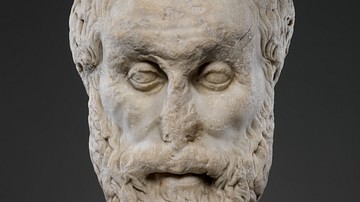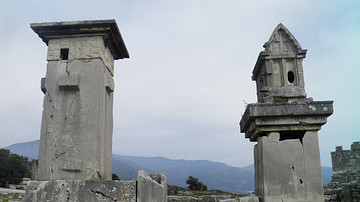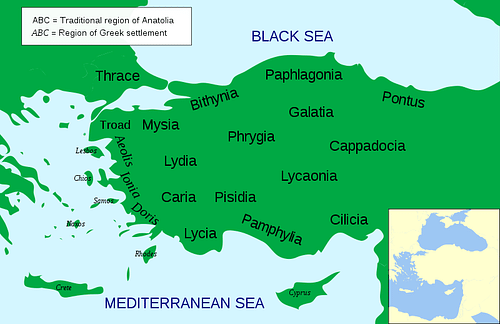
Ancient Asia Minor is a geographic region located in the south-western part of Asia comprising most of present-day Turkey. The earliest reference to the region comes from tablets of the Akkadian Dynasty (2334-2083 BCE) where it was known as The Land of the Hatti and was inhabited by the Hittites. It was among the most significant regions of antiquity.
The Hittites themselves referred to the land as Assuwa (or, earlier, Aswiya) which actually only designated the area around the delta of the river Cayster but came to be applied to the entire region. Assuwa is considered the Bronze Age origin for the name Asia as the Romans later designated the area. It was called, by the Greeks, Anatolia - literally, 'place of the rising sun', for those lands to the east of Greece.
Name & Regions
The name Asia Minor (from the Greek Mikra Asia = Little Asia) was first coined by the Christian historian Orosius (l. c. 375-418 CE) in his work Seven Books of History Against the Pagans in 400 CE to differentiate the main of Asia from that region which had been evangelized by Paul the Apostle (which included sites known from Paul's Epistles in the Bible such as Ephesus and Galatia). The Byzantine Empire of the 9th century CE referred to the region as East Thema which meant, simply, Eastern Administrative Division, and later sailors called it The Levant which meant 'the rising' or 'to rise' referring to how the land rose up out on the horizon of the sea.
In the ancient world, Asia Minor was the seat of the kingdoms and cities of:
- Thrace
- Bithynia
- Paphlagonia
- Pergamon
- Aeloia
- Phrygia
- Galatia
- Pontus
- Armenia
- Urartu
- Assyria
- Cilicia
- Pamphylia
- Lycia
- Pisidia
- Lycaonia
- Caria
- Mysia
- Ionia
- Lydia
- Troy
Famous Sites & People
The accomplishments and advancements of the people of Asia Minor are vast and comprise a catalogue of some of the most famous people, places, and events in ancient history. According to the historian Philo of Byzantium (writing in 225 BCE) and later writers, Asia Minor was the site of two of the Seven Wonders of the Ancient World: The Temple of Artemis at Ephesus (in the region of Ionia) and the Tomb of Mausolus at Halicarnassus (also known as the Mausoleum at Halicarnassus, in Caria).
In the city of Miletus, in Ionia, the first western philosopher Thales (l.c. 585 BCE), and his followers Anaximander (l. c. 610-c.546 BCE) and Anaximenes (l.c. 546 BCE), sought the First Cause of existence, the matter which gave birth to all things, and initiated scientific inquiry and method. Herodotus (l.c. 484-425/413 BCE), the 'Father of History' was born at Halicarnassus. The great philosopher and mathematician Pythagoras (l.c. 571-c. 497 BCE) was born on the island of Samos and Heraclitus (l.c. 500 BCE), another important figure of Greek philosophy, at Ephesus, where he lived and wrote.
Cilicia included the city of Tarsus where the Apostle Paul was born, a region known for its expertise in tent making, which was Paul's vocation. The region was also the site of the Library of Pergamon, second only to the great Library of Alexandria, Egypt, whose collection is said to have included over 200,000 books. The physician Galen (l. 129-216 CE) was born at Pergamon and personally tended to the health of the Roman Emperor Marcus Aurelius.
Mythology & History
Lydia was the kingdom of the great King Croesus (r. 560-546 BCE) who defied the Persian Achaemenid Empire under Cyrus the Great (r.c. 550-530 BCE) and claimed to be the happiest man in the world until his defeat and capture by the Persians. Lydia was also the site where, in Greek mythology, the Titan called Asia lived and, earlier, where the great mother goddess Potnia Aswiya (Mistress of Assuwa) was worshipped (who became Artemis and whose great temple was dedicated in the capital of Lydia, at Ephesus). Phrygia was the mythological birthplace of Rhea, the Greek Mother of the Gods and the City of Troy was made famous in Homer's 8th-century BCE works the Iliad and the Odyssey. The region of Asia Minor is regarded as the birthplace of coinage and the first to use coined money in trade; which of the kingdoms were the first to do this, however, is much disputed.
Between 1250 and 1200 BCE the Sea Peoples invaded from the south, making incursions into Greece, harassing Egypt, and finally driving the Hittites from the region of Assuwa. The Sea Peoples did not remain to colonize the area, however (at least not to any important degree) and eventually moved on to settle, in part, to the south in Canaan.
Greek colonists, mainly from Athens and surrounding Attica, settled the coastline of Asia Minor from the Mediterranean up to the Black Sea. It was these Ionian colonies which, supported and funded by Athens and Eretria, rose in revolt when the area came under Persian control, provoking the wrath of the Persian king Darius I (r. 522-486 BCE) and the first invasion of Greece in 490 BCE which was repelled at the Battle of Marathon.
Alexander the Great defeated the Persians in 334-333 BCE and conquered Asia Minor. In Gordium, capital of Phrygia, he is claimed to have famously cut the Gordian Knot which the oracles claimed meant Alexander would be king of Asia. Following his death, the land was governed by his general Antigonus I in the north and west and his other general Seleucus I Nicator to the south and east and was prominently involved in the Wars of the Diadochi (the wars of Alexander's successors). The region remained unstable throughout the rule of the Hellenistic governors until the coming of Rome in 133 BCE (King Attalus III of Pergamon left his city the Roman Republic in his will and thus invited the Roman presence fully into the region). After 133 BCE, Rome steadily conquered or annexed the cities of Asia Minor until it was wholly a Roman province.
Under Roman rule, the land became stabilized; roads were built and the infrastructures of many of the cities improved. The coastal communities flourished and Ephesus, especially, enjoyed great prosperity until the rise of Christianity when 'earthly' advances in the region were neglected in anticipation of the Second Coming of Christ.
The Byzantine Empire, which had held the region since 395 CE, continued its control after the fall of the Roman Empire in 476 CE and, after the rise of Islam, the later Byzantine Christians fought the Islamic Caliphates for the land until the coming of the Seljuq Turks in 1068 CE. Turkish control increased in the region until 1299 CE when Asia Minor became part of the Ottoman Empire and, after its collapse, became Turkey.
